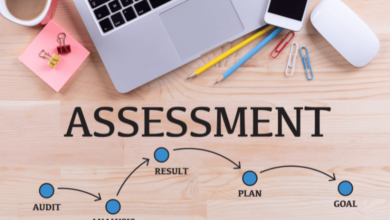
We live in a world of uncertainties all around us. These include uncertainty about the future, managing finances, finding the right job, getting a promotion, and living a good life, etc. Although there are institutions that offer solutions for credit repair, today, people are going even further.
This world has become a place where financial decisions hold significant importance. It means lessons about responsible credit use are even given to children as an investment for their future.
Starting early with financial education ensures that children will have the power to make informed choices and promote healthy financial habits. Teaching children about credit goes beyond mere fiscal matters; it’s about making them grow into someone who is accountable and thoughtful when making decisions.
Why Is Teaching Children about Responsible Credit Use A Good Idea?
Understanding credit is an essential life skill that can have a lasting impact on children’s financial well-being. By teaching responsible credit use, families equip children with the tools to:
-
Avoid Debt Traps
Children can learn to use credit responsibly. This in turn, helps in reducing their likelihood of falling into debt traps that can affect their financial future.
-
Build Good Credit Scores
Teaching children about credit at an early age helps them comprehend how credit scores work and why they matter.
-
Make Informed Choices
When the children’s minds are filled with financial knowledge, they can make informed decisions about borrowing, lending, and safeguarding their financial strength.
Effective Ways to Teach Children about Responsible Credit Use
-
Open Dialogue
Try to talk about why money matters. You may include topics like credit usage and early life benefits of learning the basics. In addition, try to answer their questions and address their curiosity with proper replies.
-
Real-Life Examples
Use real-life scenarios to illustrate how credit works. For instance, explain the concept of borrowing with relatable examples like borrowing toys or sharing snacks.
-
Allowance and Chores
Introduce an allowance system and associate it with responsibilities. Teach children to budget, save, and spend within their means.
-
Needs vs. Wants
Teach the distinction between needs and wants. Discuss how using credit for essentials, like groceries, might differ from using it for non-essentials.
-
Family Budgeting
Involve children in creating a family budget. Discuss monthly expenses, savings goals, and how credit factors into the overall financial picture.
-
Credit Card Simulations
Create a simple credit card simulation where children “borrow” money and repay with interest from their allowance. This helps them grasp the concept of interest.
-
Online Resources
Use online games, interactive tools, and educational videos to make learning about credit engaging and enjoyable.
The Power of Setting a Positive Example
Parents and guardians are children’s first role models. Demonstrating responsible credit use in your own financial choices sets a powerful example:
-
Transparency
Let children witness how credit is responsibly used for essential purchases and how payments are made on time.
-
Budgeting
Involve them in family budget discussions and demonstrate the importance of living within your means.
-
Delayed Gratification
Showcase how patience and saving lead to more significant rewards, discouraging impulsive credit-driven decisions.
Creating Lifelong Habits
If you want to make sure that the idea of responsibility and credit usage isn’t a one-time lesson instead, it’s an ongoing process, then make sure they keep learning:
-
Encourage Savings
Emphasize the importance of saving money to fulfill future goals and minimize the need for credit.
-
Review Financial Choices
As children grow, discuss hypothetical scenarios and evaluate how credit decisions could impact their financial goals.
-
Practice Empathy
Encourage children to understand the financial choices of others and empathize with their challenges.
Conclusion
When you are teaching children about responsible credit use, consider it a gift that will keep giving the fruit in their future. It equips them with essential life skills, instills values of accountability, and empowers them to navigate the complex financial world with confidence.
By adding in credit education into everyday conversations you have with them, try leading by example. Creating a culture of financial responsibility is possible. Families can set their children on a path toward a brighter financial future.
Remember, every discussion about credit is a stepping stone toward shaping a generation of financially savvy individuals.
Check out these valuable insights to gain a deeper understanding of the topic and empower yourself with knowledge that will undoubtedly make a difference.






